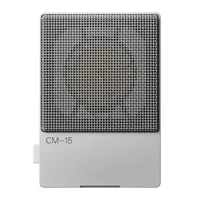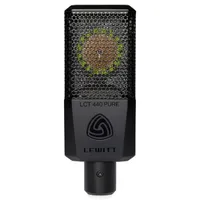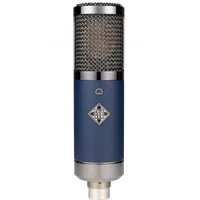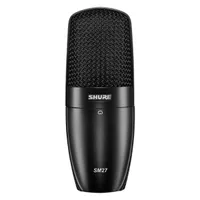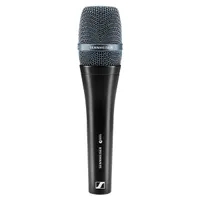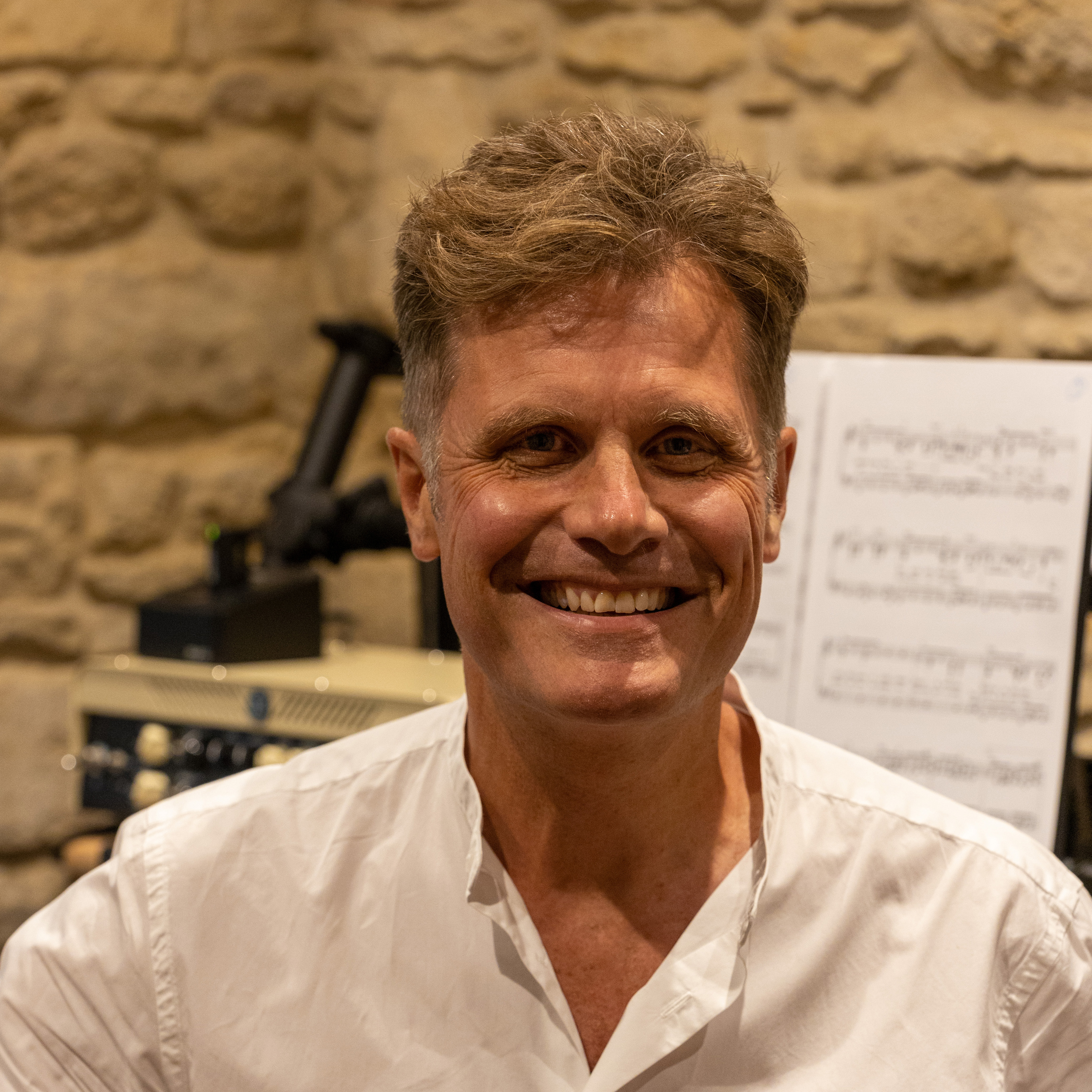Best condenser mics 2025: my expert picks for home recording
Capture every nuance of a vocal and high-fidelity detail of an instrument with condenser microphones from Rode, Neumann, Audio-Technica, Aston, AKG and more
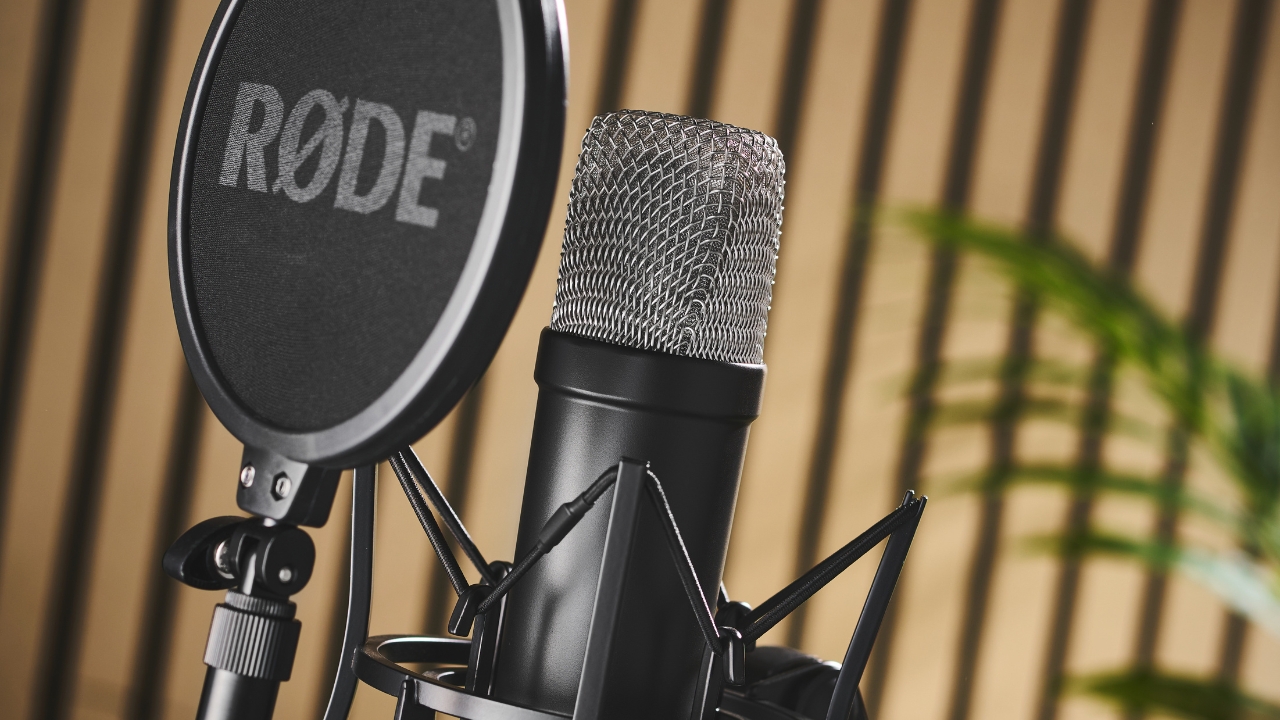
I've been home recording for well over 20 years now, and in that time I've had a lot of different mics in my possession. For me, the best condenser mics remain the most versatile studio tools, able to cover a huge amount of ground even if it's the only microphone you've got.
A good condenser will be able to record vocals, guitars, drums, pianos, and pretty much anything else, making them a vital tool for any home studio. Condenser mics deliver high-fidelity sound and a better frequency response than a dynamic mic, but they do require an external power source and are far more easily broken, so I wouldn't recommend one for live use.
The mics in this list will excel at a variety of tasks, but I've highlighted the best characteristics of each to make it easier for you to decide if you're not quite sure what you need. For all of these mics, you'll need an audio interface with phantom power to record with, as this guide covers music-specific condensers rather than USB podcasting mics or those for streaming.
My top picks
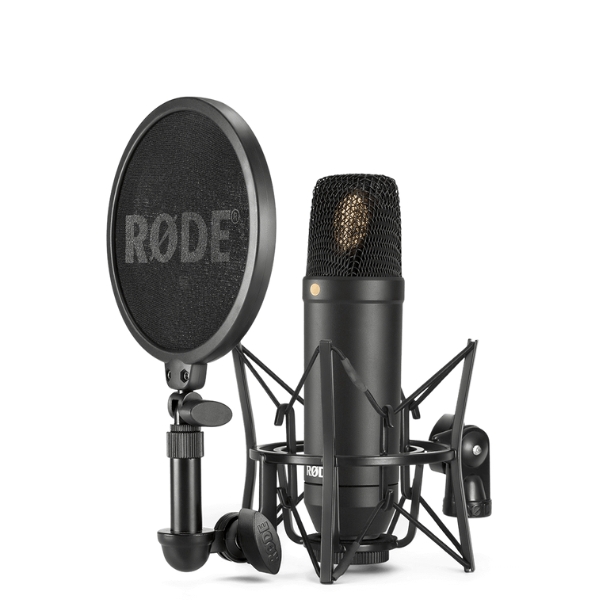
Delivering exceptional performance, robust build quality, and an incredibly low noise level, the Rode NT1 Signature is a brilliant condenser for beginners, and the inclusion of a shock mount and pop filter make it great value too.
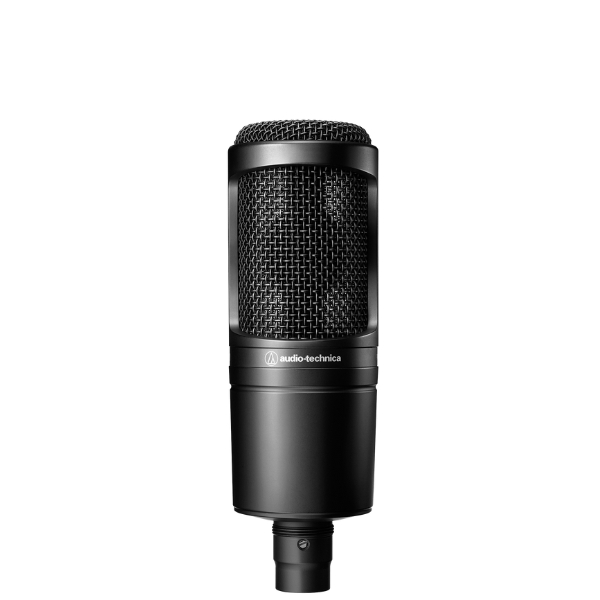
The Audio-Technica AT2020 is a brilliant budget condenser that punches well above its weight when it comes to sound. It's equally great on vocals or instruments, and the ultra-low price makes it exceptional value.

While we'd all love to have a U87 in our mic locker, it's well out of our price range for most of us. Enter the Neumann TLM 103, which delivers that coveted sonic character for much less, making it the perfect mic for at-home vocal recording.
Best for beginners
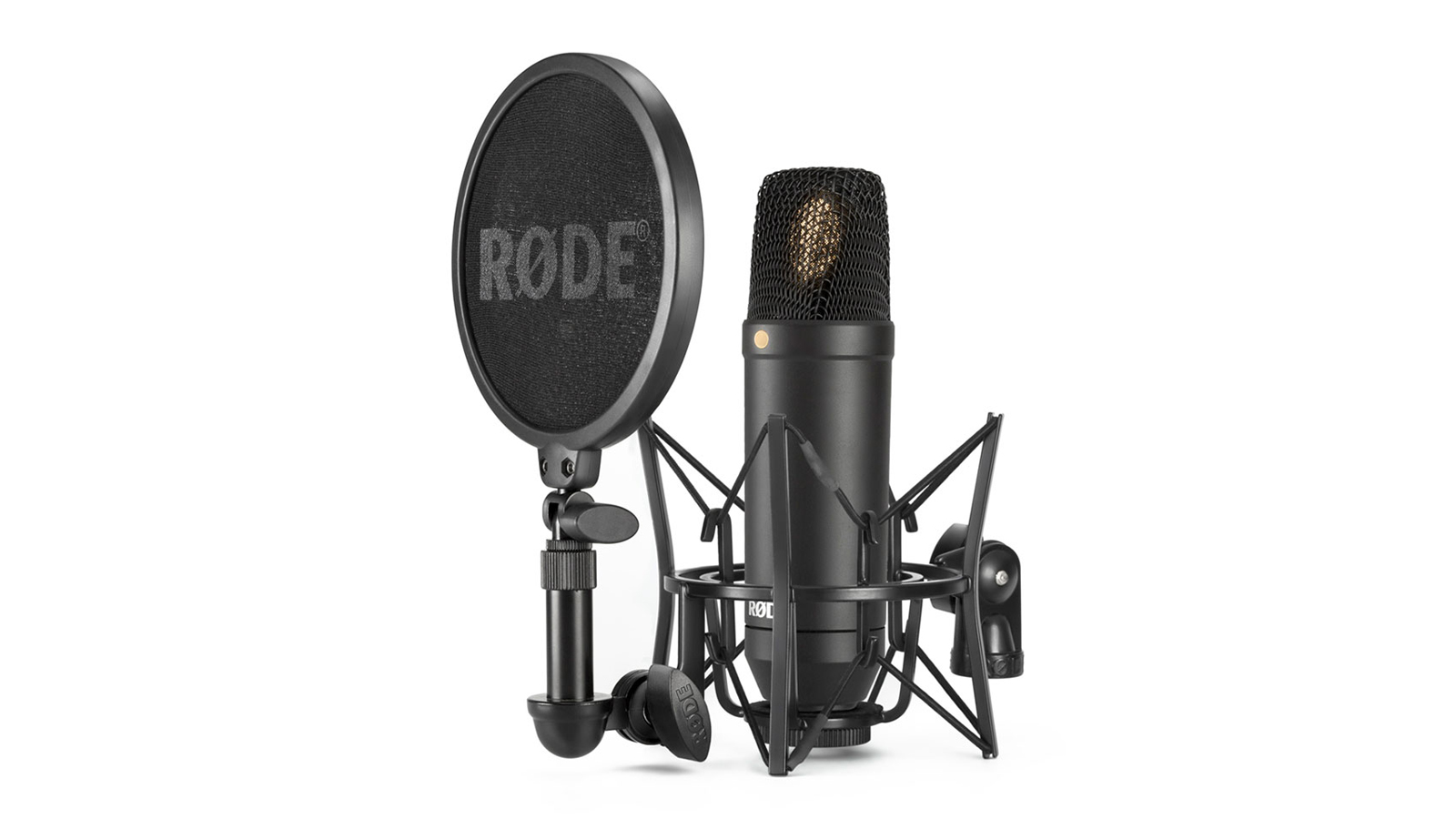
Specifications
Reasons to buy
Reasons to avoid
✅ Buy if you want your first condenser mic: A great option for beginners thanks to the inclusion of a shock mount and pop filter, the Rode NT1 is a great first-time condenser mic.
❌ Avoid if you need extra functionality: There are no pad or mode switches here, so if you need something a little more versatile then look elsewhere.
Rode's recently revamped NT1 Signature Series is arguably the world's quietest one-inch cardioid condenser mic, with a self-noise level of just 4dBA. We certainly found it ultra-quiet and versatile enough to mic a wide variety of sources.
Its smart, sleek design and dark-grey livery look über-cool, but the minimalist form factor does lack switches for a bass roll-off or pad. At this price point, that's hardly surprising. It also comes in 7 different paint jobs, all with a matt finish that is equal parts robust and gorgeous.
What the NT1 does offer is exceptional performance. Vocals are crisp and detailed with plenty of warm low end, nothing amiss in the mid-range, and a wonderful airy clarity to the top end. That silky top end provides fantastic results when recording acoustic guitars and hand-held percussion. It's also cheap enough that you can buy two and they'll do a great job as drum overheads or stereo-miking a piano.
The lack of a pad probably precludes it from close-miking loud drums and guitar cabs, but it's heartily recommended for almost every other studio application. A suspension shock mount and pop shield are included in the box, making the NT1 Signature Series exceptional value.
Read our full Rode NT1 Signature Series review
Best budget
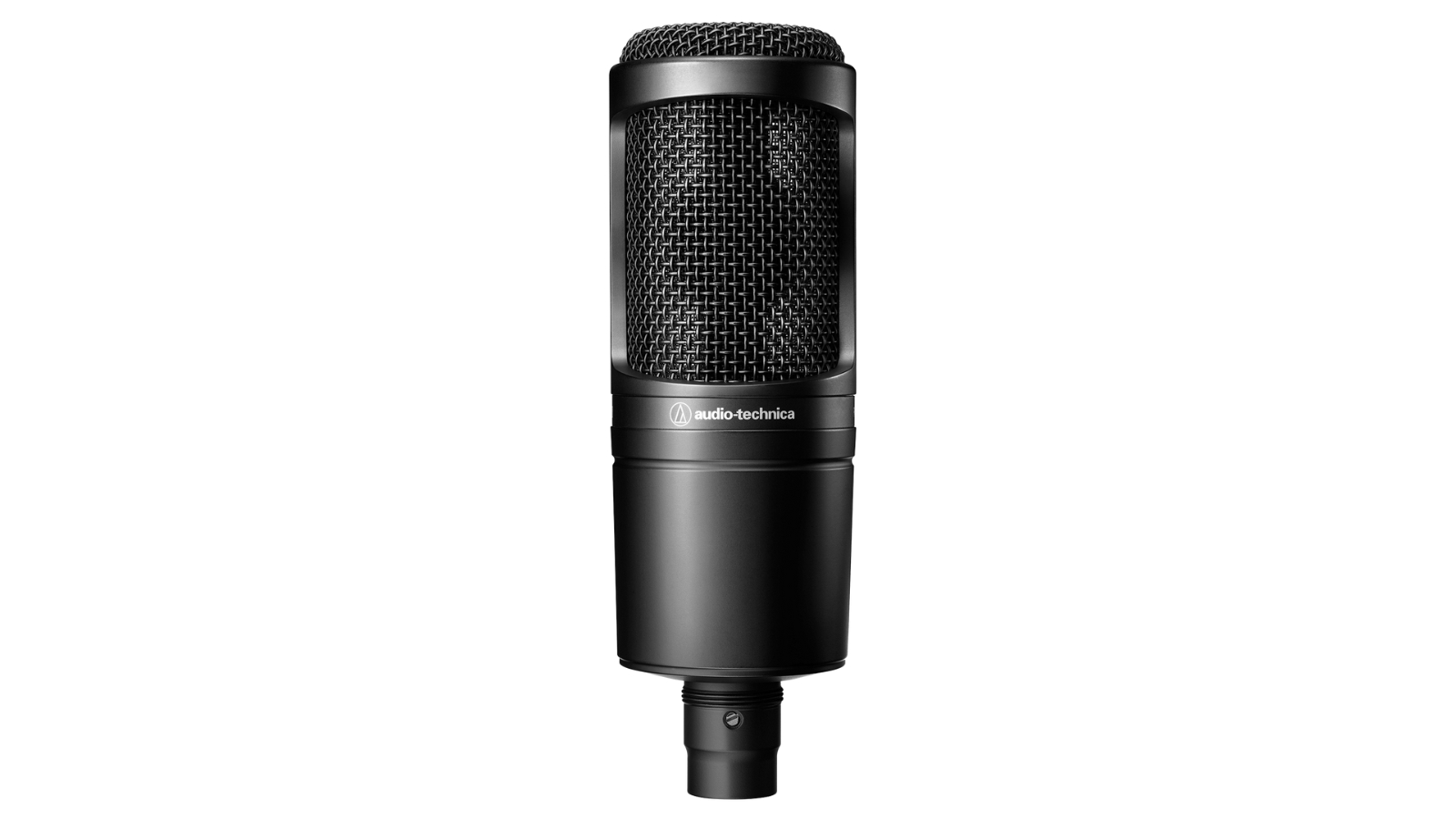
2. Audio-Technica AT2020
Our expert review:
Specifications
Reasons to buy
Reasons to avoid
✅ Buy if you're on a tight budget: Often found for below the $/£100 mark, the AT2020 is the ultimate budget microphone, and a regular best-seller thanks to its low price.
❌ Avoid if you're capturing quiet sources: This mic is quite noisy compared to others, so if you're capturing quieter instruments or groups in a room, it might prove too noisy for you.
If your budget’s tight but you need a mic, the Audio-Technica AT2020 is a brilliant option for first-timers or the cash-strapped. Despite being cheaply priced, it’s a hefty bit of kit that will definitely put up with studio life, and it’s got the sound to match.
The AT2020 delivers the full 20Hz-20kHz bandwidth, with plenty of bass response. It’s got that mid-range warmth that flatters many vocalists and a slight presence peak that doesn’t push things into harsher or sibilant territory.
It works fantastically well on a variety of instruments like acoustic guitars, delivering the natural sound of the instrument in a room with a little tweaking. There is a little bit of noise here, so it might not do as well recording quieter instruments from further away, but for close miking on a budget, it’s absolutely brilliant.
Best for vocals

3. Neumann TLM 103
Our expert review:
Specifications
Reasons to buy
Reasons to avoid
✅ Buy if you want to record vocals at home: Neumann is one of the biggest mic brands in the recording sphere, and despite being aimed at home studios, you'll find the TLM series in pro studios too.
❌ Avoid if you need extra functionality: As with most lower-budget mics, there's precious little in the way of pads and pattern switching here.
Neumann is one of the most revered names in microphones, but the breathtaking sonic character of its products is usually matched by heart-stopping prices. To address this, some years ago the manufacturer introduced a range of more pocket-friendly, TLM-branded models – one of which was the TLM 103. Originally aimed at home studios, the mic has since found its way into the hands of many pros. So, how does it stack up against a 'proper' Neumann?
Very well, as it happens. The TLM 103 is billed by Neumann as an affordable version of the venerable U 87 Ai, one of the best-loved studio microphones in the world. Its capsule design is derived from the U 87 Ai but, instead of offering three polar patterns, the TLM 103 is a fixed cardioid. Both mics share a similar sonic character, but the TLM 103 has a slightly wider presence boost for frequencies above 5kHz. This lends its voice a touch more clarity.
Despite the lack of a pad, filter, and switchable patterns, this is more than just a great vocal mic. Try it with acoustic guitars, drum overheads, pianos, classical strings, and even lightly driven electric guitar cabs, and you won't be disappointed. Some will dismiss the TLM 103 as a budget Neumann, but if you don't need the additional features of the U 87 Ai, then ignore the haters and save yourself a bundle.
Best for versatility
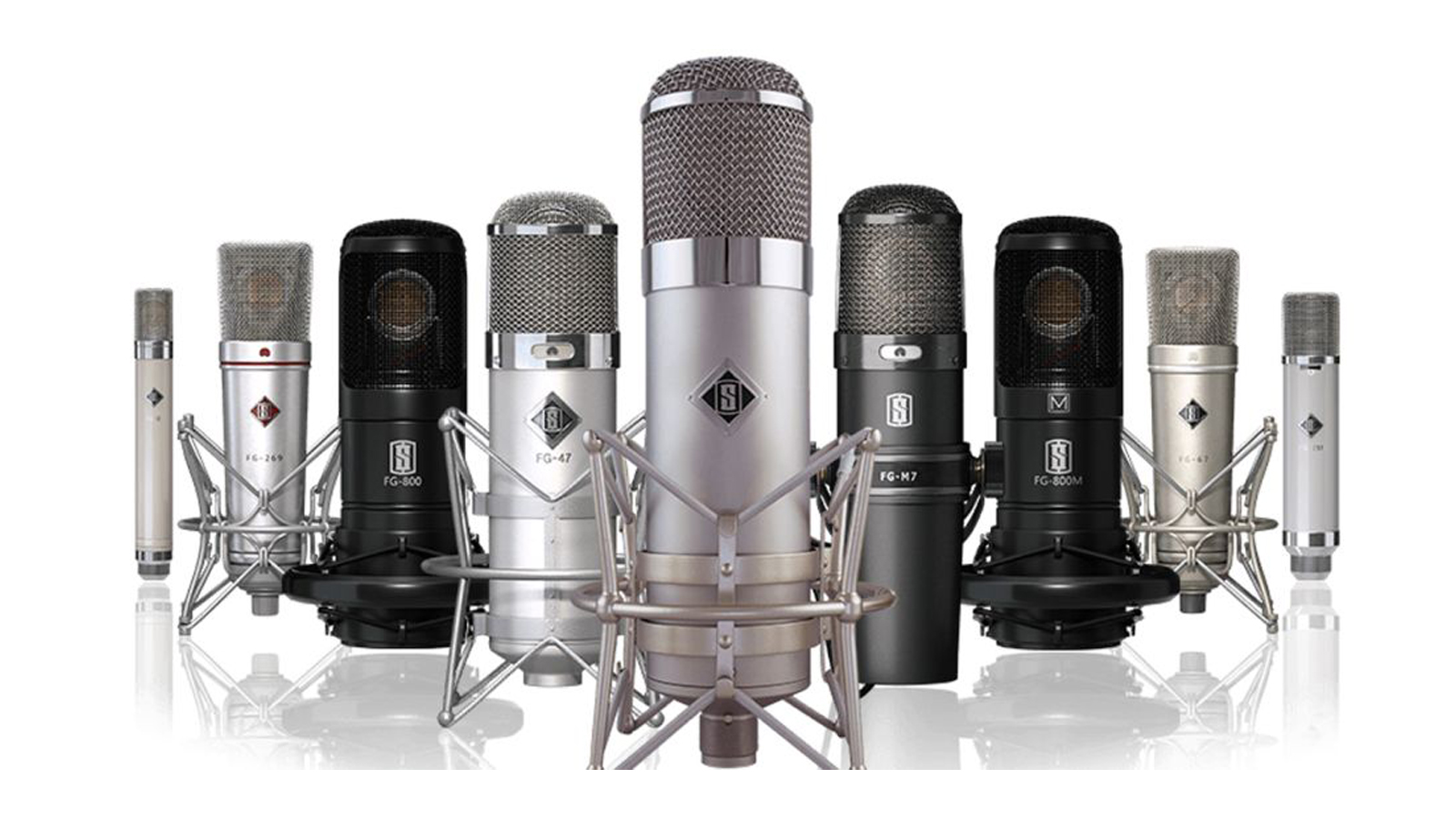
Specifications
Reasons to buy
Reasons to avoid
✅ Buy if you want lots for your money: This modeling mic can capture the character of loads of classic condenser mics, making it great if you need something that can do it all at home.
❌ Avoid if you're a beginner: If you're looking for your first condenser, the VMS will likely be overkill and give you option paralysis.
Let's face it, equipping your studio with a fine quiver of classic mics is going to cost you a five-figure sum, which for many of us just isn't feasible. But before getting too disheartened, it's worth considering whether modelling technology might help you realise your dream.
Slate's take on this technology is to provide studios with an entire system – mic, preamp, and plug-in – so that the integrity of the entire audio signal is guaranteed. This should mean the end result more closely matches the audio characteristics of the original mics. The manufacturer’s system mic, the ML-1, is a large-diaphragm FET that promises to provide a flat, clean response, and the bundled hardware preamp is similarly neutral and pristine. The perfect blank canvas, if you like.
The magic happens when this transparent signal is processed by one of the eight included mic models loaded into Slate's Virtual Mix Rack software. The models are the FG-47 (Neumann’s iconic U 47), the FG-800 (Sony’s C-800G), the FG-251 (Telefunken’s ELA M 251), the FG-67 (Neumann’s U 67), the FG-12 (AKG C12), the FG-M7 (Shure’s SM7B) and the FG-269 (Neumann’s M 269 c). Two software preamps are also bundled with the VMS – the FG-73 (Neve 1073) and the FG-76 (based on Telefunken’s V76).
Flicking between the mic models opens up a whole new world for us. The characters are very distinct and entirely in keeping with what we expect. There's so much on offer here, it’s a very seductive package.
Read our full Slate Digital VMS review
Best mid-price
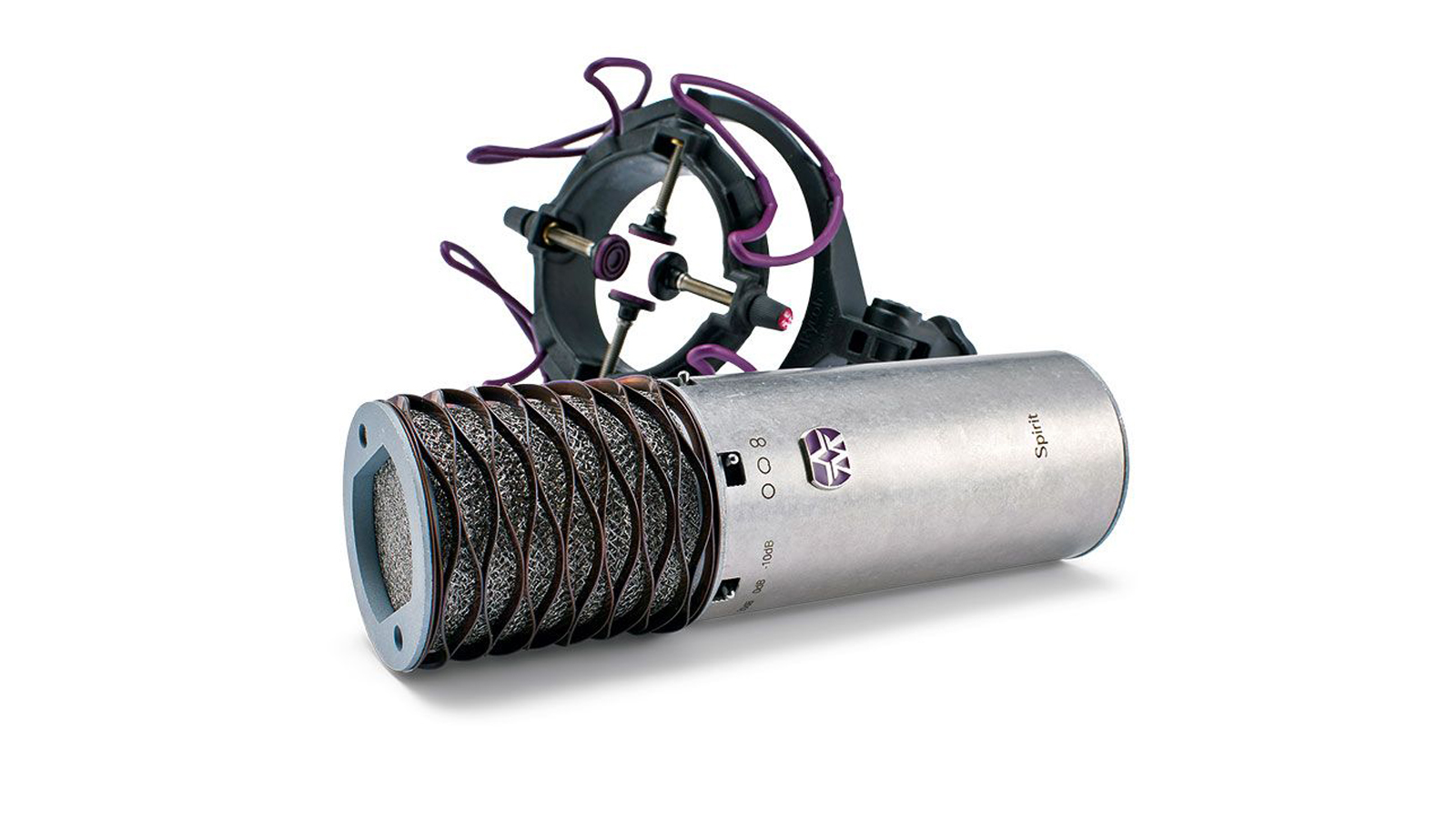
Specifications
Reasons to buy
Reasons to avoid
✅ Buy if you're stepping up from a beginner mic: The perfect next step from something like the AT2020 or NT1, the Aston Spirit is a top-quality condenser with a pad and switchable patterns.
❌ Avoid if you're buying your first mic: The Spirit is for those who've already used a condenser before, so it doesn't come with any of the accessories you need to get started.
The Aston Spirit may not offer any groundbreaking features or revelatory new tech, but it does stay true to the original spirit of Aston, which is to develop fine-quality instruments that punch above their mid-range price point. And, of course, it's made in Britain with pride.
The Spirit has a very strong aesthetic, a 'look' shared by its sibling the Origin. Their wave-shaped, sprung mesh guards and solid stainless-steel casings mark them out as something a bit special in a crowded market. A rather smart, black textured version is available, too, as part of the Spirit Black Bundle, which comes complete with a much-needed shock mount and pop filter.
Three switchable patterns are on tap: cardioid, omni, and figure-8. There's also a pad with selectable -10dB and -20dB attenuation, plus an 80Hz low-cut filter. It performs wonderfully for vocals and acoustic guitar, displaying a smooth mid-range, a high top, and agreeable brightness. The proximity effect response is well-tamed, so close-miking vocals in cardioid mode isn't a biggie. With its switchable polar patterns and low noise characteristic, it also suits room mic and distant miking roles.
The Spirit is great value for money, the slightly more expensive Spirit Black Bundle even more so.
Read our full Aston Spirit review
Best tube condenser
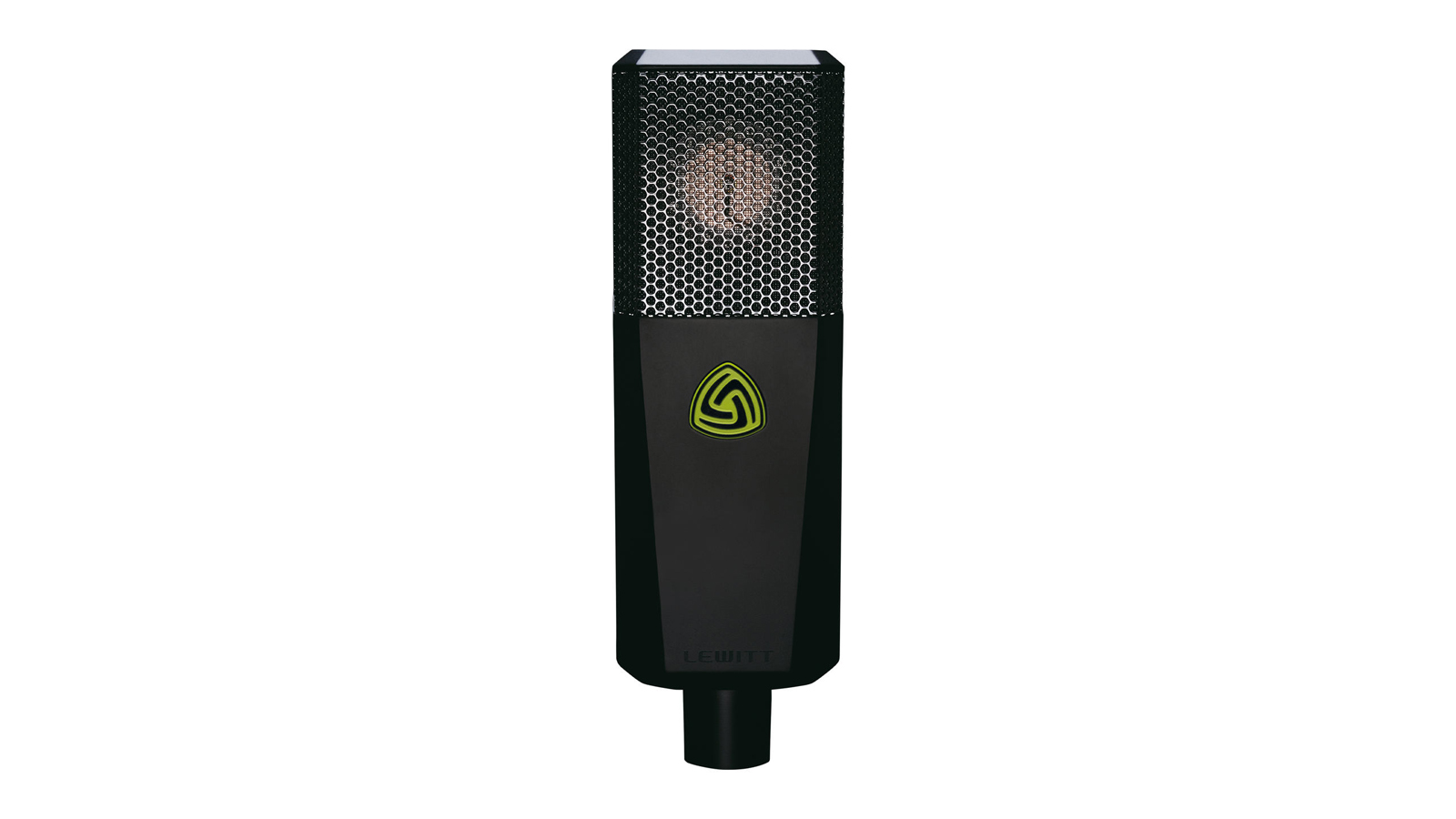
6. Lewitt LCT 940
Our expert review:
Specifications
Reasons to buy
Reasons to avoid
✅ Buy if you want serious versatility from your condenser: With its mix of solid state and tube circuitry, pads, and different polar patterns the ability to mix and match sounds here makes this an uber-versatile condenser mic.
❌ Avoid if you're a beginner: You'll likely be jumping in the deep end with this mic if you're a beginner, so it'd be better to get to grips with something simpler before advancing to this.
If you love the idea of shaping sound with a microphone, or instantly being able to dial in a faithful tone, then the Lewitt LCT 940 is worthy of a place on your shortlist. Fancy the warmth of a tube mic one minute and the purity of a FET mic the next? Well, the LCT gives you both at the twist of a dial, plus the ability to blend them together.
The LCT 940 is two quality mics in one, and everything in between. To help you access its myriad features, Lewitt provides a decent-sized combined PSU and remote-control unit. Turn the left-hand dial to choose between FET and tube circuitry, or any blend of the two. Twist the right-hand dial to select one of nine polar patterns – omni, broad-cardioid, cardioid, super-cardioid, and figure-8, plus an additional four intermediate patterns that sit between them.
Pad settings range from -6dB to a substantial -18dB, enabling this mic to pick up some seriously loud sounds. A low-cut filter operates from 40Hz right up to 300Hz – well into the lower mid-range.
These features add up to one very versatile studio tool. Whether you're looking for an instrument to record a faithful rendition of a sound source, or you want to creatively enhance it, the LCT 940 fits the bill. Talking of bills, this mic may carry a relatively high price tag but it offers a heck of a lot for the money.
AKG C12 alternative

7. Austrian Audio OC16
Our expert review:
Specifications
Reasons to buy
Reasons to avoid
Rumour has it that Austrian Audio had to have a custom XXL cabinet built to house all the awards it’s won for its flagship microphones, the OC818 and OD18. OK, we made up the bit about the cabinet, but it’s true that the company has received nothing but accolades for these fabulous mics. At the core of both lies Austrian Audio’s take on the vintage AKG C12 capsule, this time built using ceramic rather than brass for more consistent performance.
Incredibly, neither of these mics can be described as super expensive, with the feature-packed OC 818 carrying a street price tag of around $1,200 and the OC18 coming in at about a third less. That said, they’re not exactly cheap either, which is where the new OC16 comes in.
Imagine the same mics stripped of all their non-essential features? That’s the OC16. The Austrian-built CKR12 capsule is the same, except it’s single rather than dual, and there’s no pattern switching or pad. You do get the same airy grille design and non-reflective surfaces but, by its own admission, Austrian Audio has smoothed a few corners with the circuitry. However, the only consequence appears to be slightly higher self-noise, which really isn’t a biggie.
We think Austrian Audio is on to something here. We’re sure that most users, if pressed, would prioritise sound quality over features, making the OC16 a very attractive bargain. An actual C12 will be difficult and expensive to get hold of, but the OC16 makes it easy enough for us regular recording engineers to get that hallowed sound.
Best for drum overheads
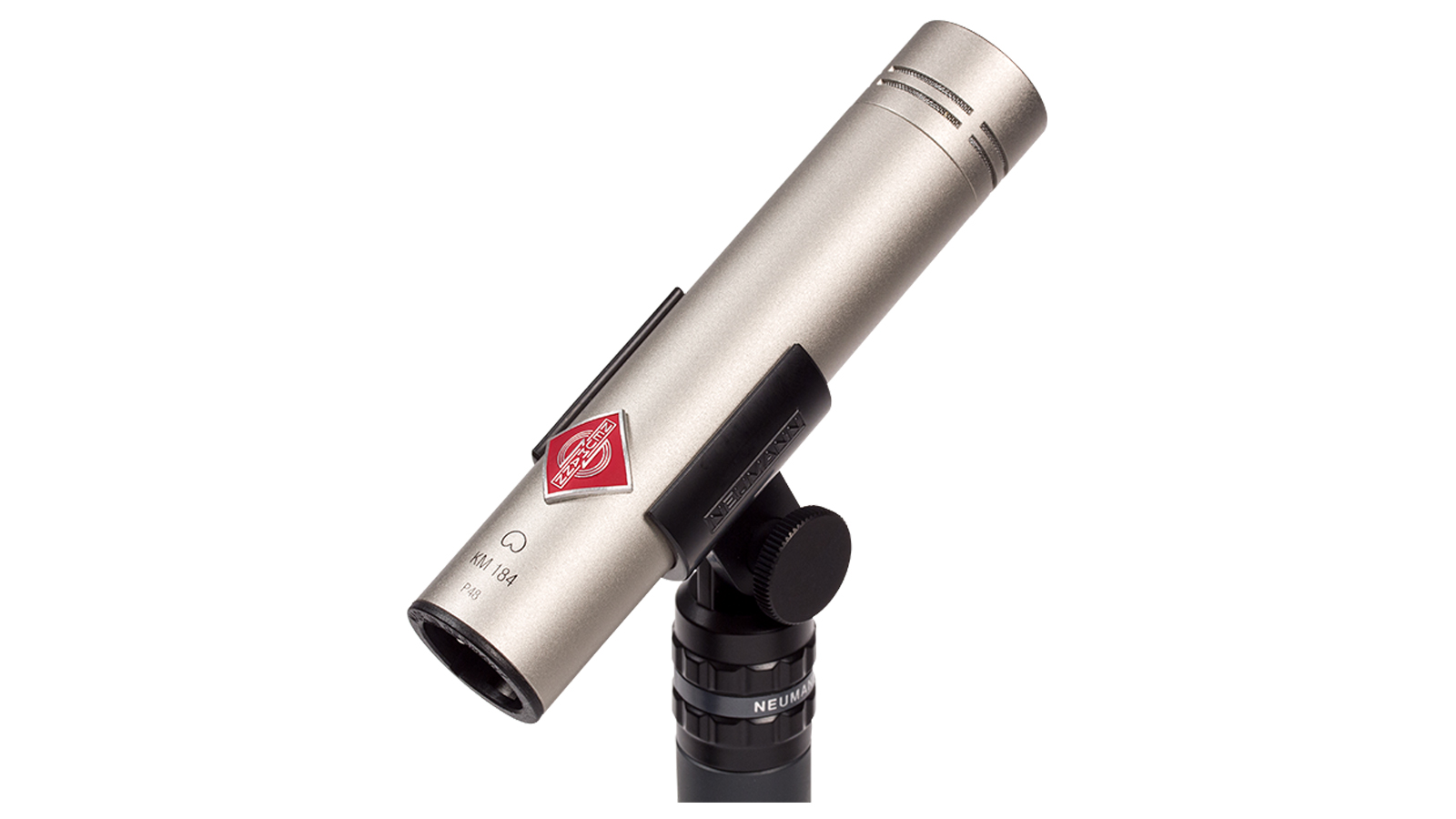
8. Neumann KM 184
Our expert review:
Specifications
Reasons to buy
Reasons to avoid
✅ Buy if you want to record drums: Brilliant as an overhead mic, the KM 184 will give you an honest sound of whatever source you point it at. Best used in a pair.
❌ Avoid if you're only recording vocals: Large-diaphragm condensers tend to flatter vocalists, but a small diaphragm condenser will be too 'honest' for recording vocals.
Vocalists love mics that flatter their voices by adding a little low-end warmth or some top-end presence. Large- diaphragm condensers are just the job because they sprinkle a touch of sonic fairy dust over the sound.
But when it comes to miking instruments, audiences expect to hear faithful renditions of the original source without anything being added or taken away. This is where small-diaphragm condensers come in, because they have a relatively flat response that yields a very transparent sound. Their tiny size means they are also very easy to place and visually unobtrusive.
The Neumann KM 184 is one of the best-regarded small-diaphragm condensers, especially for miking drum overheads. Usually bought in matched pairs or sets, for stereo or surround-sound applications, it is also a popular choice for piano, acoustic guitar, violin, woodwind and brass. Small-diaphragm condensers can be used for vocals but usually only where complete authenticity is required.
Best pro-option
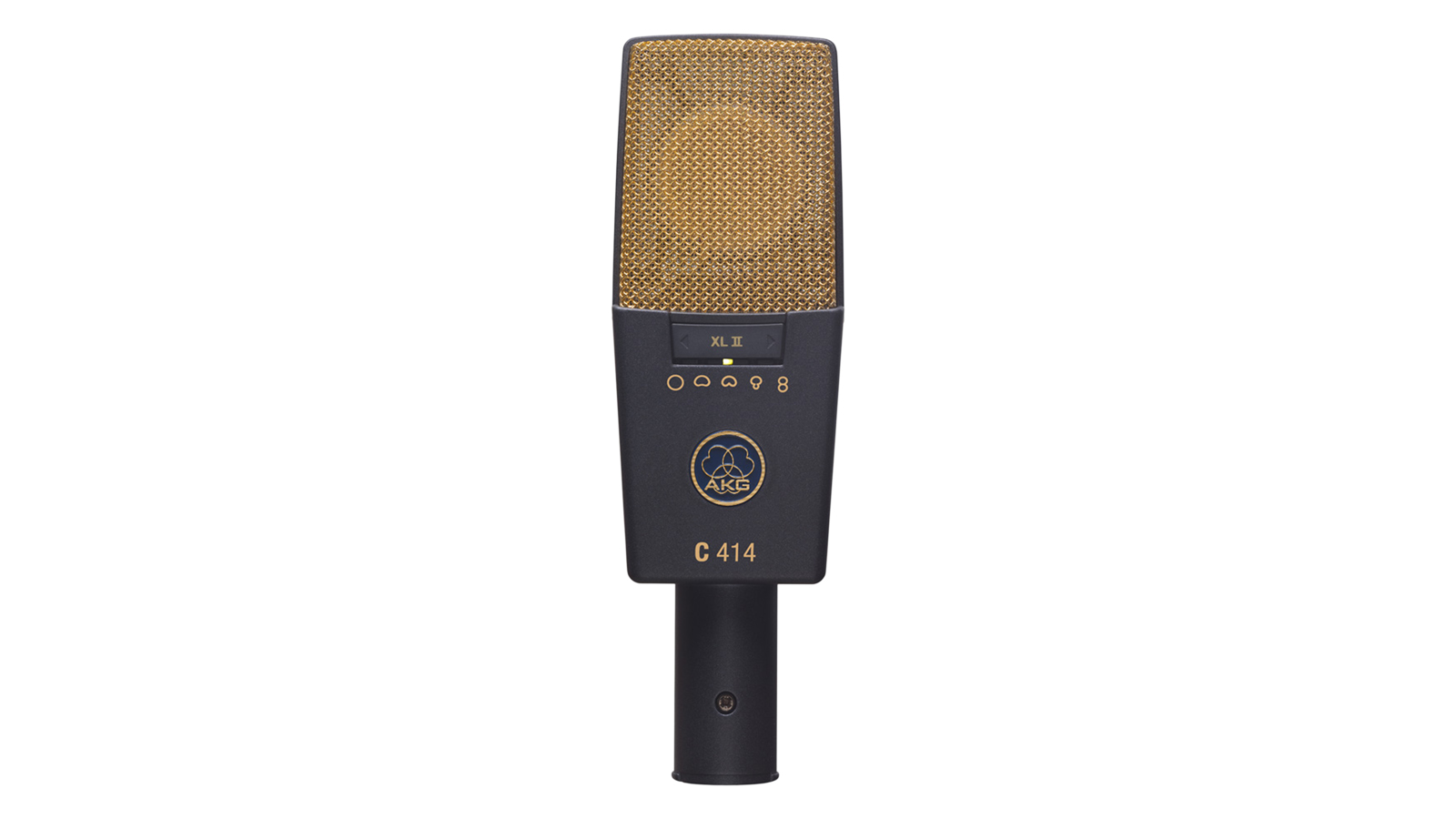
9. AKG C414 XLII
Our expert review:
Specifications
Reasons to buy
Reasons to avoid
✅ Buy if you want a professional-level condenser: With its airy top end and C12-esque qualities, this is the sort of condenser you'll find in professional recording studios.
❌ Avoid if you don't have a treated space: Be warned though, if your recording room is bad this mic will expose all the flaws.
The C414 XLII is AKG's valiant attempt to reproduce the sound of its iconic C12 microphone from the 1950s. Its frequency curve has a slightly more pronounced lift above 3kHz, which gives it an airier top end than its close sibling the C414 B-XLS.
The headline feature is its nine – yes, nine – switchable patterns, which harks back to the original C12. There are five base patterns – omnidirectional, wide cardioid, cardioid, hyper cardioid and figure-8 – but these can be combined with one another for sonic experimentation. Pad settings provide -6dB, -12dB and -18dB attenuation levels, and three different low-cut filters can be employed.
This comprehensive feature set means the C414 XLII can tackle just about anything. As a C12 soundalike, it's outstanding for vocals, but it can also handle piano, strings, horns and woodwind with aplomb. Build quality is excellent.
Spec comparison
Here you'll find an easy way to compare all the top picks in this guide side by side. Use this table if you're struggling to decide between a selection of the mics in this guide.
Model | Diaphragm | Pattern | Pad | Low Cut |
|---|---|---|---|---|
Rode NT1 | Large | Cardioid | No | No |
Audio-Technica AT2020 | Large | Cardioid | No | No |
Neumann TLM 103 | Large | Cardioid | No | No |
Slate Digital VMS ML-1 | Large | Cardioid | No | No |
Aston Microphones Spirit | Large | Switchable | Yes | Yes |
Lewitt LCT 940 | Large | Switchable | Yes | Yes |
Austrian Audio OC16 | Large | Cardioid | No | No |
Neumann KM 184 | Small | Cardioid | No | No |
AKG C414 XLII | Large | Switchable | Yes | Yes |
Also consider
The above condenser mics are for us, the ones you should be spending your money on. They aren't the only ones we've reviewed however, so if you didn't quite see what you were looking for above, here is a selection of other condenser microphones we've reviewed.
Teenage Engineering CM-15
Large-diaphragm | Cardioid | No pad | No low cut
Easily the smallest and most portable condenser mic in this guide, the Teenage Engineering CM-15 is a lesson in seductive industrial design. As part of TE’s wider Field range, the CM-15 is designed with portability in mind, coming in around the size of a standard deck of cards. It features an internal battery, so can be phantom-powered on its own, along with three different ways in which you can connect it to your interface or mixer.
★★★★½
Read more: Teenage Engineering CM-15 review
Lewitt LCT 440 Pure
Large-diaphragm | Cardioid | No pad | No low cut
If you’re after a condenser microphone that punches above its price point, the Lewitt LCT 440 Pure is a great mid-range option for recording vocals and other instruments. A favourite of YouTubers and home recording enthusiasts, the mixture of quality components and performance makes it an enticing choice. It’s a simple microphone without many bells and whistles, but it does a fantastic job on vocals and acoustic guitars, with a signal-to-noise ratio that is really quite good. Considering the cost of this mic, the recorded sound you get from it is exceptional quality.
★★★★½
Read more: Lewitt LCT 440 Pure review
Telefunken TF11 FET
Large-diaphragm | Cardioid | No pad | No low cut
The Telefunken TF11 FET is a small, beautiful-looking mic – we love the blue – that sounds open, balanced, exhibits fast transient response, and can handle high SPL numbers. Its response curve is mostly flat with a very smooth bass roll-off below 130Hz and a presence boost from about 2kHz to 8kHz. Consequently, it records with plenty of high-end detail, making it perfect for anything from drum overheads to acoustic guitars, including vocals.
★★★★☆
Shure SM27
Large-diaphragm | Cardioid | Pad | Low cut
the SM27 has a flat, neutral frequency response and very low self-noise. It's perfect for reproducing faithful, natural renditions of delicate sound sources such as tender vocals, acoustic guitar, strings, cymbals, woodwind, and saxophone. A -15dB pad means it's equally brilliant for miking up screamers and guitar cabs. The SM27 is a proper all-rounder that's equally at home in the studio or on the stage.
★★★★☆
Sennheiser e 965
Large-diaphragm | Switchable | Pad | Low cut
The e 965 is a rare beast in that Sennheiser has specifically developed it for handheld stage use. Ordinarily, this is not comfortable territory for a large-diaphragm condenser mic – these prefer to be cosseted in a shock mount and protected by a large pop shield. Enter the e 965, which transmits even the finest nuances in impressive detail. Polar patterns can be switched between cardioid and super-cardioid to reject unwanted sounds; there's a low-cut filter to omit rumble; and a built-in pop filter handles plosives.
★★★★☆
FAQs
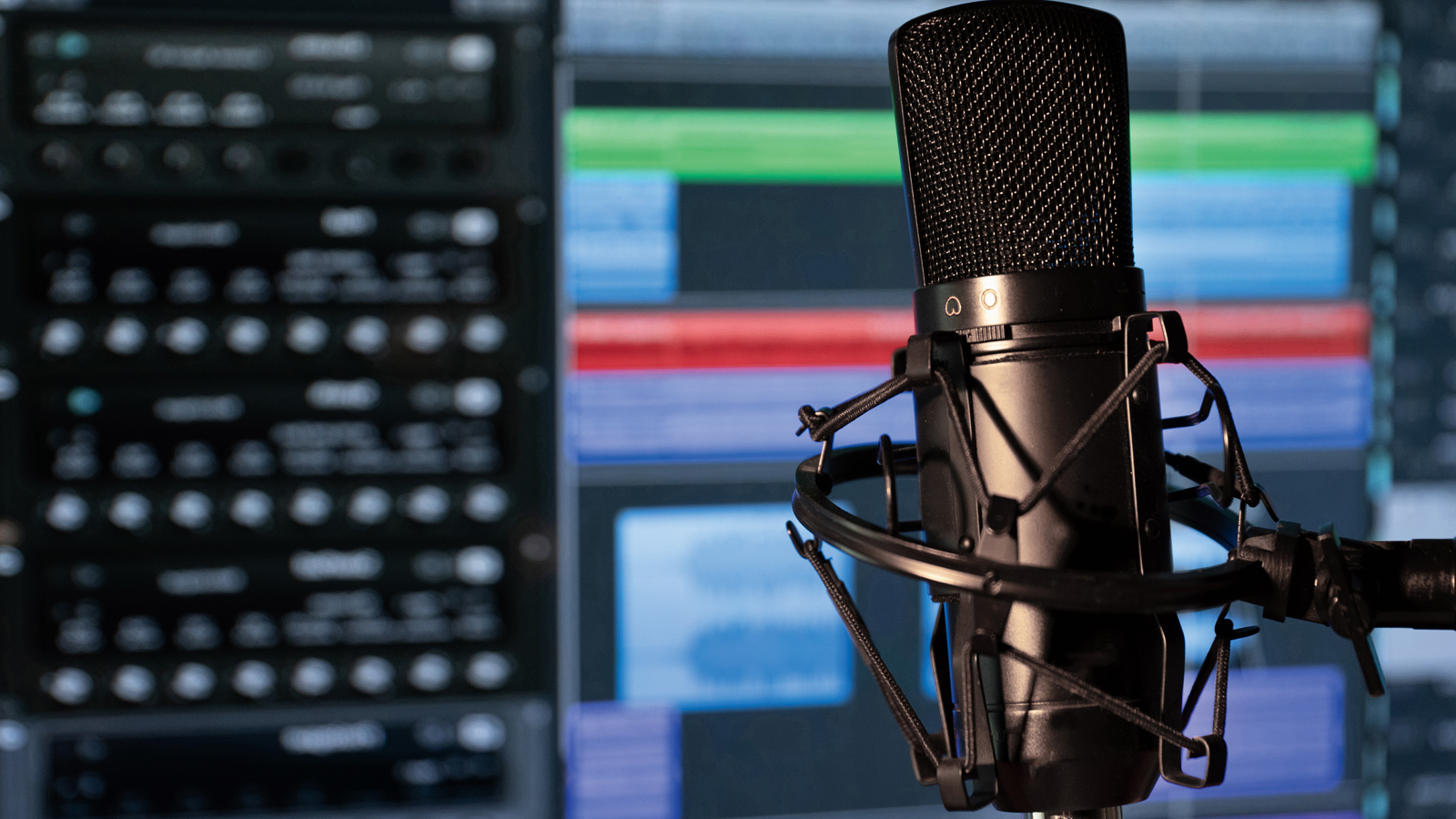
How do condenser microphones work?
Fundamentally, condenser microphones - like any mic - are fairly simple devices. At a basic level, they work by converting sound waves into electrical signals through a capacitor. Inside the microphone, a diaphragm vibrates in response to sound, causing changes in the distance between it and a backplate. This variation in distance alters the capacitance, generating an electrical signal proportional to the sound waves which, when converted back at the interface or mixer, creates the sound you hear through your headphones or monitor speakers. Condenser mics do require a power source, typically provided through batteries or - more commonly - via phantom power from a mixer or audio interface.
Compared to dynamic microphones, condensers offer greater sensitivity and wider frequency response, making them ideal for capturing detailed sound in studio settings, such as recording vocals, acoustic instruments, and intricate sound effects. Dynamic mics, on the other hand, are rugged and better suited for live performances or high-volume environments.
Condenser microphones really shine in situations where capturing nuances and subtleties is crucial, providing clearer, more accurate recordings with less background noise, hence the reason they’re usually preferred for capturing studio-quality recordings.
What is a condenser microphone used for?
There are certain studio jobs which are better suited to condenser mics. As we’ve outlined, this includes - but is by no means limited to - anything that can be considered acoustic or natural.
Vocals: Condenser microphones excel at capturing the nuances and details of vocal performances, making them ideal for recording singers in studio environments. We’re looking for subtle changes in tone, dynamics, and timbre, with the condenser able to deliver clear and expressive vocal recordings with minimal distortion.
Acoustic guitar: Condenser mics are commonly used to record acoustic guitars due to their ability to faithfully reproduce the instrument's natural sound. Through a condenser, a great guitar can sound magical. Condensers capture all those rich harmonics, intricate fingerpicking, and subtle nuances of acoustic guitar performances, delivering warm and detailed recordings.
Piano: When recording piano, condenser microphones are often preferred for their ability to capture the instrument's full range and dynamics, i.e. those subtle changes in volume and percussiveness. They capture the nuances of each note, right across the frequency spectrum, resulting in a balanced and expressive piano sound suitable for classical, jazz, or pop recordings.
Orchestral Instruments: Condenser microphones are frequently used to record orchestral instruments such as strings, brass, and woodwinds, capturing the full range and tonal characteristics of each instrument and allowing for detailed and lifelike recordings of symphonic performances.
What's the difference between a dynamic and a condenser microphone?
Rather than mistakenly believe that one kind of mic is better or worse than another, we’d suggest reframing your creative expectations. The truth is that all mics - dynamic, condenser, large-diaphragm, small-diaphragm and so on - will colour or affect your sound to some extent. On the face of it, this trait may seem undesirable but it can reveal huge creative opportunities.
Consider the sound you are trying to achieve and then think of a mic as an instrument that will help you to realise it. Different mics and different applications will yield different results. Not necessarily better or worse, just different.
This explains why pro studios have a legion of different microphones at their disposal, and why so many producers, engineers and artists favour particular models to reproduce their signature sounds. It also helps us to make sense of the huge variety of condenser mics on the market, and narrow our choice down to the model or models that will best fit our sonic ambitions.
What are the 3 types of microphone pickup patterns?
Different polar patterns not only dictate how directional a mic is, they also have different frequency responses, resulting in different sounds.
Cardioid mics have what’s called a unidirectional pickup pattern, which means they are good for isolating the singer or instrument being miked up. Their pickup pattern faces a single direction.
Omni-directional mics pick up sound from all around, but their character is more open, natural and less nasal than cardioids. Omnis also suffer less from the proximity effect - the low-frequency boost that appears when close miking.
Bi-directional mics, more commonly known as the ‘figure of eight’ pattern are sensitive to sound from the front and back, but reject sound from the sides. These aren’t the most popular but they can be useful for picking up two different sources positioned side-by-side.
So, although it seems logical to reach for a cardioid when miking up a vocalist, you may be better off using an omni in a well-treated room where reflections have been minimised. This could be an expensive studio or a spare bedroom with judicious placement of duvets and blankets!
How we test
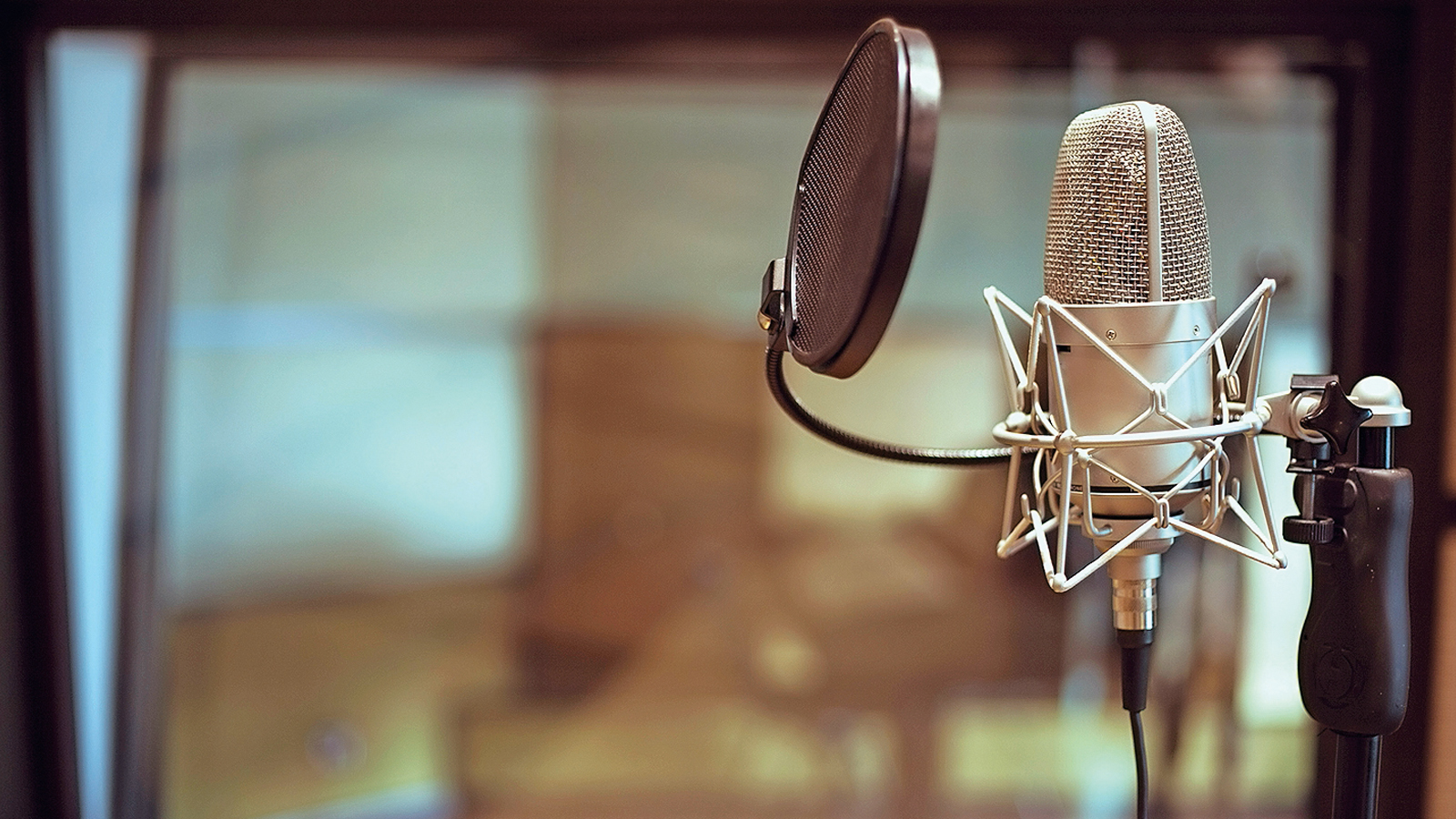
At MusicRadar, we understand the pivotal role that condenser microphones play in capturing pristine audio recordings. With our team of experienced audio enthusiasts, we've delved into the world of condenser microphones, rigorously testing various models in real-world scenarios to offer you practical and reliable reviews and recommendations.
Our curated selection of condenser mics embody exceptional sonic clarity and the versatility required by a modern recording studio. We meticulously assess factors such as sound quality, sensitivity, polar patterns, build quality, and adaptability to ensure that these microphones stand out as prime examples of recording excellence.
With MusicRadar as your trusted source, explore our recommended condenser microphones, whether you're a studio professional, content creator, or live sound engineer. Our real-world expertise ensures that you'll discover the microphones that elevate your recordings, capture nuanced performances, and unlock the full spectrum of sonic possibilities.
Find out more about how we test music gear and services at MusicRadar.
Related buyer's guides
MusicRadar's got your back
- The best cheap microphones available today
- Cut the cord with the best wireless microphones
- Make yourself heard with the best XLR microphones
- Work the crowd with the best live vocal microphones
- Hold your microphone steadfast with the best mic stands
Want all the hottest music and gear news, reviews, deals, features and more, direct to your inbox? Sign up here.
When Simon's childhood classical guitar teacher boasted he 'enjoyed a challenge', the poor man had no idea how much he'd underestimated the scale of the task ahead. Despite Simon's lack of talent, the experience did spark a lifelong passion for music. His classical guitar was discarded for an electric, then a room full of electrics before Simon discovered the joys of keys. Against all odds, Simon somehow managed to blag a career as a fashion journalist, but he's now more suitably employed writing for MusicRadar and Guitar World. When not writing or playing, he can be found terrifying himself on his mountain bike.
- Chris Corfield
- Matt McCrackenJunior Deals Writer
